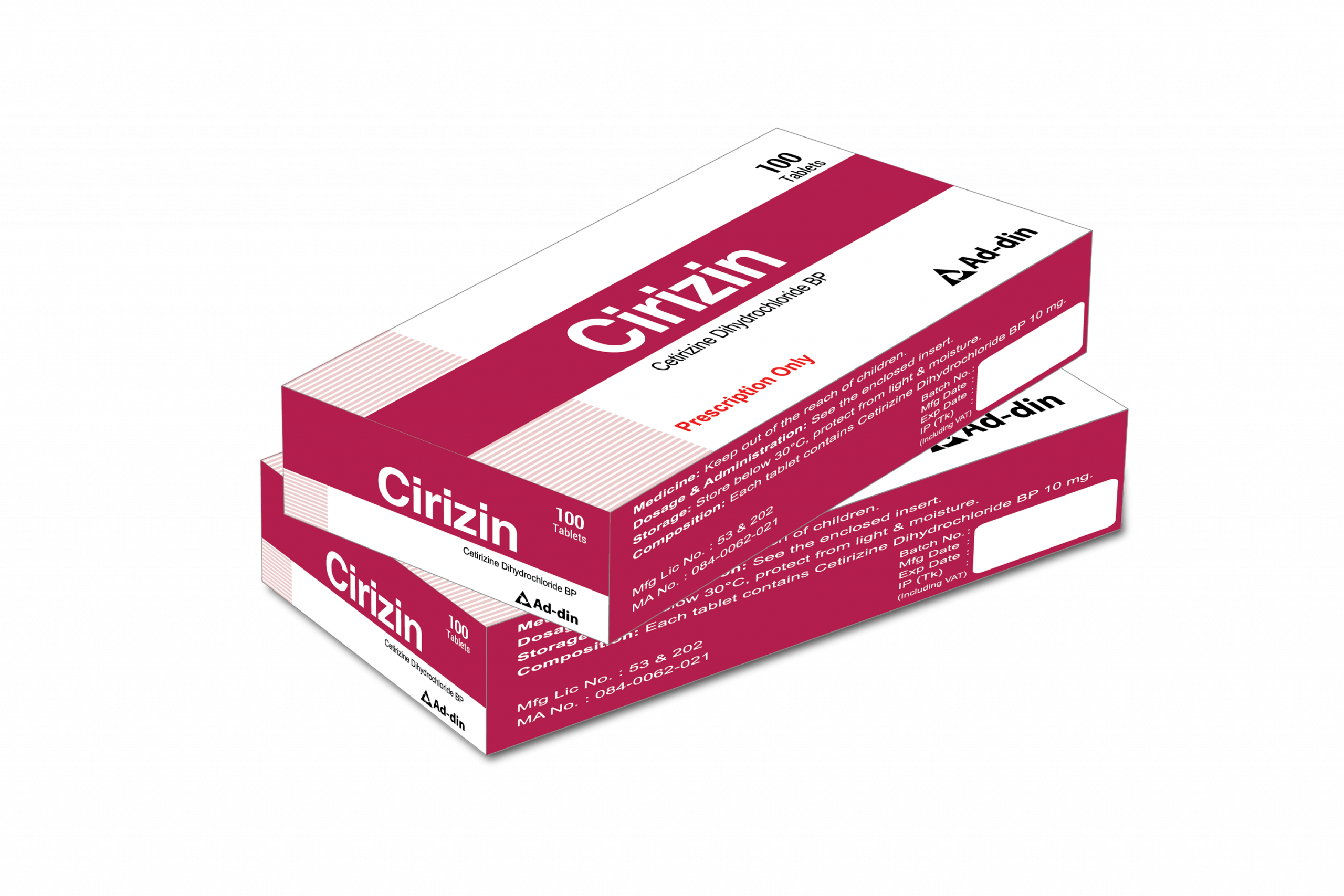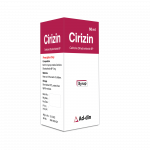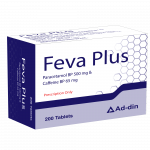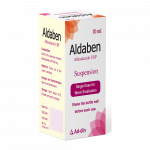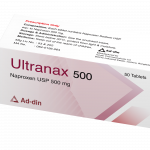Composition
Each tablet contains 10 mg Cetirizine Dihydrochloride BP.
Pharmacology
Cetirizine Dihydrochloride is a potent H1 receptor antagonist without any significant anticholinergic and antiserotonic effects. At pharmacologically active dose levels, it has almost no drowsiness effect and does not cause behavioral changes. It inhibits the histamine-mediated early phase of the allergic reaction and also reduces the migration of inflammatory cells and the release of mediators associated with the late phase of the allergic reaction.
Pharmacokinetics: Cetirizine 10 mg achieves peak plasma concentrations of 257 mcg/L within one hour of administration (980 mcg/L in children). Food does not affect the extent of absorption, but it may slightly reduce the rate. Peak blood levels 0.3 micrograms/ml are reached between thirty & sixty minutes after administration of 10 mg dose of Cetirizine. Its plasma half-life is approximately 11 hours. Absorption is very consistent from one subject to the next. Its renal clearance is 30 ml/minute and the excretion half-life is approximately nine hours.
Indications
It is indicated for the relief of symptoms associated with seasonal & perennial allergic rhinitis. It is also indicated for the treatment of the uncomplicated skin manifestations of chronic idiopathic urticaria and allergen induced asthma.
Dosage & Administration
Cetirizine oral dosage form:
- Adults and Children 6 years and older: 1 tablet or 2 teaspoonfuls daily (or 1 teaspoonful twice daily).
- Children 2-6 years: 1 teaspoonful once daily or 1/2 teaspoonful twice daily.
- Children 6 months to 2 years: 1/2 teaspoonful once daily. The dose in children 12-23 months of age can be increased to a maximum dose as 1/2 teaspoonful every 12 hours.
Interaction
No clinically significant drug interactions have been found with Theophylline, Azithromycin, Pseudoephedrine, Ketoconazole or Erythromycin and with other drugs.
Contraindications
It is contraindicated in patients with a history of hypersensitivity to Cetirizine or hydroxyzine.
Precautions & Warnings
Caution should be exercised when driving a car or operating a heavy machinery.
Side Effects
The most common side effects that occurred more frequently on Cetirizine is somnolence.
Pregnancy & Lactation
US FDA Pregnancy Category of Cetirizine Hydrochloride is B. There are, however, no adequate and well-controlled studies in pregnant women. Because animal reproduction studies are not always predictive of human response, this drug should be used during pregnancy only if clearly needed. Cetirizine Hydrochloride has been shown to be excreted in human milk. So, caution should be exercised when Cetirizine Hydrochloride is administered to a nursing woman.
Use in Special Populations
Hepatic or renal insufficiency: In patients with mild to moderate hepatic and renal impairment, total body clearance of cetirizine hydrochloride is reduced and AUC and half-life increased by about 2 to 3 fold. Clearance is reduced in proportion to the decline in creatinine clearance. Plasma levels are unaffected by hemodialysis. The plasma elimination half-life in dialysis patients is approximately 20 hours and the plasma AUC is increased by about threefold.
Pediatric Use: The safety of cetirizine hydrochloride has been demonstrated in pediatric patients aged 6 months to 5 years.
Elderly use: The clearance of cetirizine hydrochloride is reduced in elderly patients, but only in proportion to the decrease in creatinine clearance.
Storage
Store below 30°C, protect from light and moisture. Keep out of reach of children.
Packaging
Each box contains 100 tablets in blister pack.

